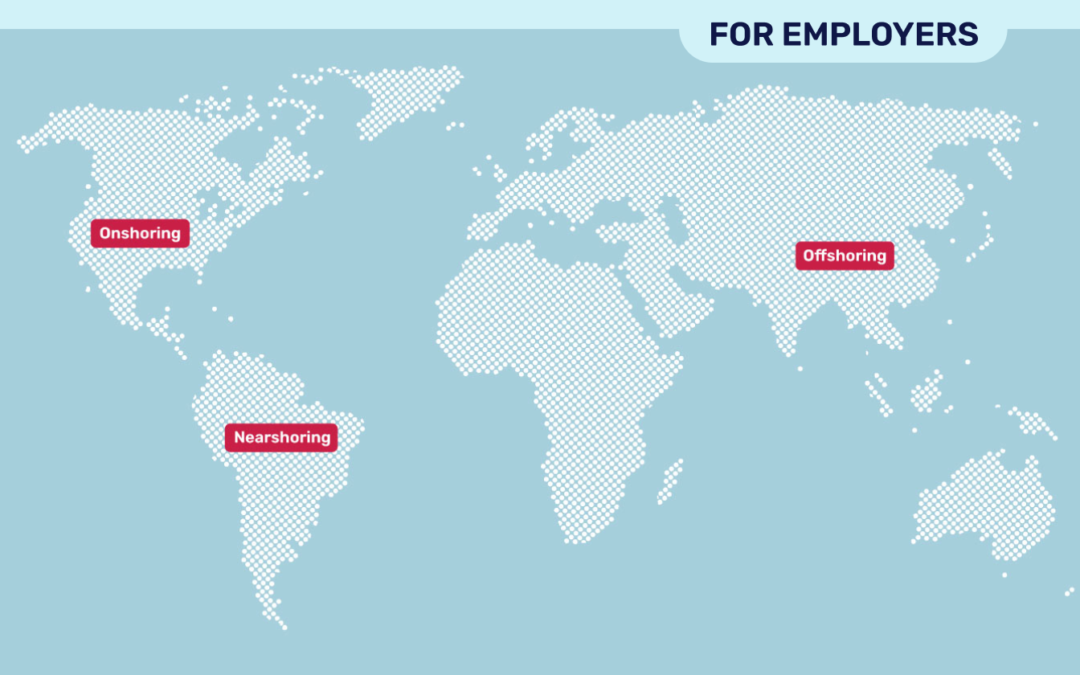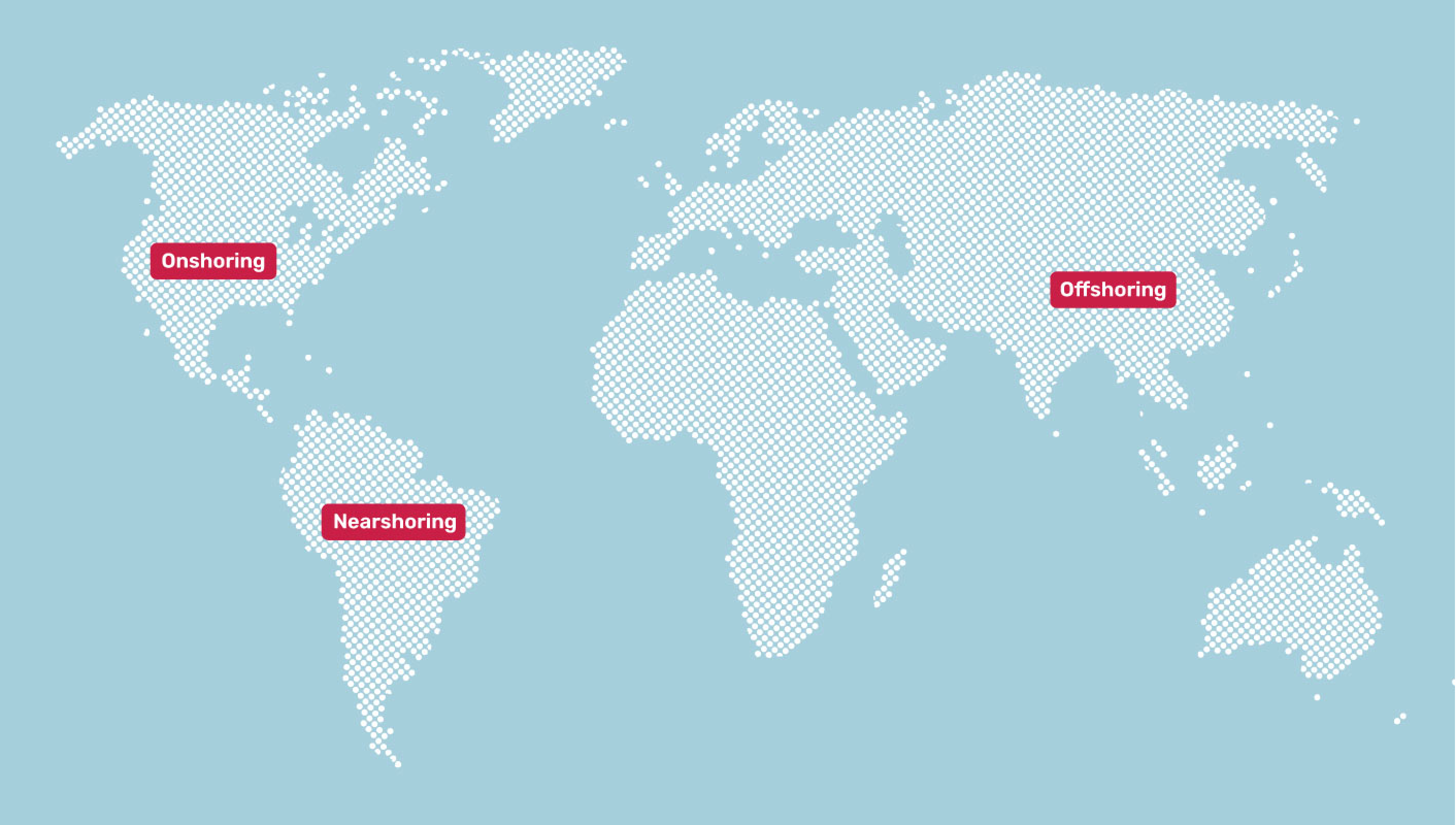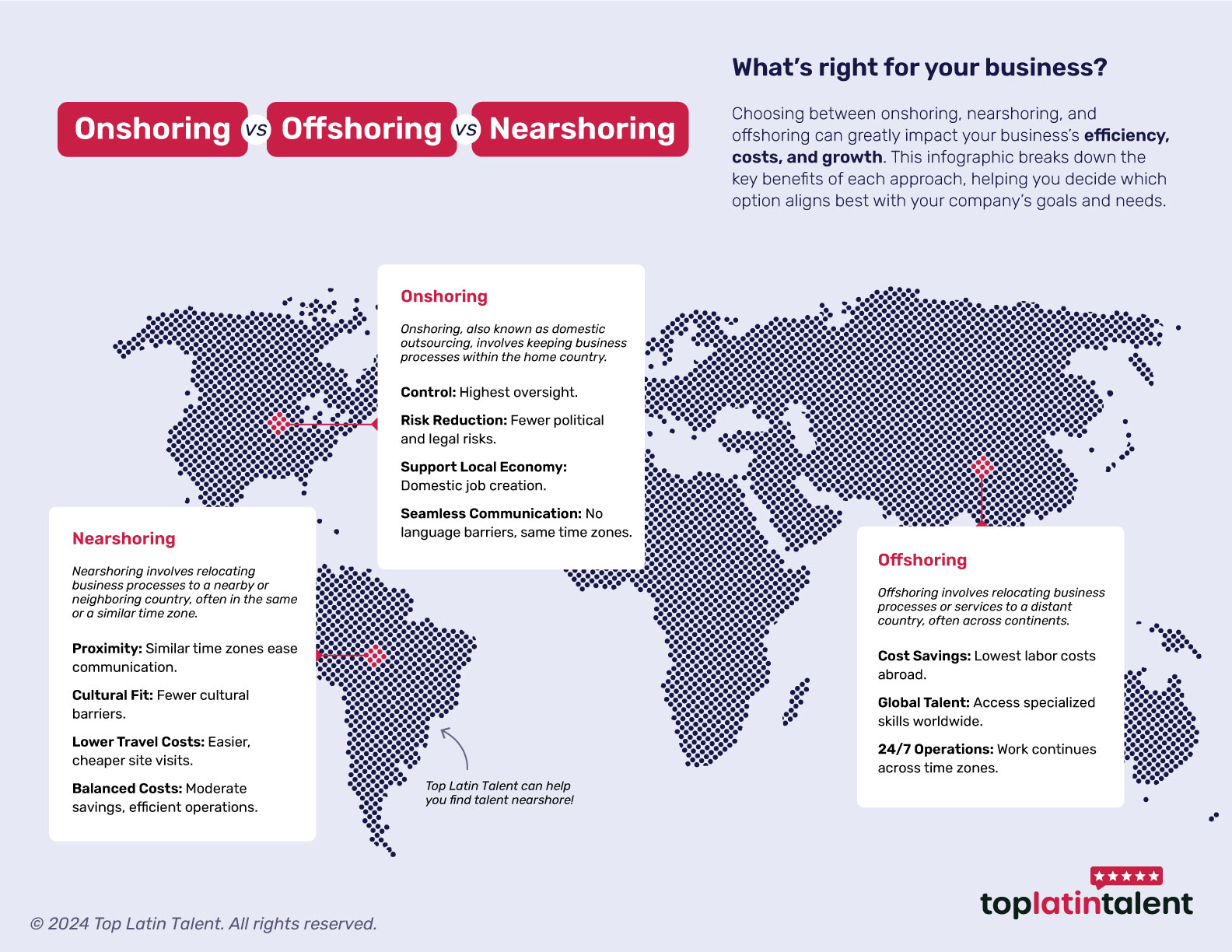
What to look for in a recruitment company in LATAM
What to look for in a recruitment company in LATAM

In today’s competitive job market, Latin America is recognized as a significant source of skilled professionals across various industries. For businesses aiming to access this talent pool, selecting the right recruitment company in LATAM can make a substantial difference. This guide will help you understand the essential qualities to look for in a recruitment firm based in LATAM and how such a partner can enhance your hiring strategy.
The role of a recruitment firm in Latin America
A recruitment firm specializing in Latin America plays a pivotal role in connecting employers with top talent. By focusing on sourcing and placing candidates, these firms ensure that businesses efficiently meet their hiring needs. They handle everything from job analysis to candidate placement, making them crucial partners in achieving successful hires.
Key aspects of the recruitment process
1.Job analysis and preparation
- Understanding regional needs: Effective recruitment begins with a deep understanding of the local job market. A recruitment firm in LATAM evaluates regional market dynamics to craft accurate job descriptions tailored to local standards.
- Tailored job descriptions: Creating job postings that reflect both the qualifications needed and local industry standards ensures that they attract suitable candidates.
2.Candidate sourcing
- Access to a broad talent pool: Recruitment firms leverage extensive networks and job boards to source diverse candidates. They utilize local resources to find individuals who meet the job criteria.
- Targeted searches for specialized roles: The firm conducts targeted searches for niche or senior roles to identify passive candidates with the required expertise.
3.Screening and shortlisting
- Initial assessments: The firm performs thorough screenings, including resume reviews and preliminary interviews, to assess candidate suitability.
- Effective shortlisting: By focusing on the most promising candidates, the firm helps businesses avoid the challenges of sifting through numerous applications.
4.Interview coordination
- Managing logistics: The recruitment firm handles the logistics of scheduling and coordinating interviews, ensuring a smooth process for all parties involved.
- Candidate preparation: Offering guidance and interview tips helps candidates present their best selves, improving the hiring process.
5.Offer management and onboarding
- Negotiation support: The firm assists in negotiating offers to ensure a satisfactory agreement for both employers and candidates.
- Onboarding assistance: Providing support during onboarding helps new hires integrate smoothly into their new roles and company culture.
Benefits of partnering with a recruitment company in LATAM
1. Time Efficiency
Partnering with a recruitment firm in LATAM streamlines the hiring process. The firm manages sourcing, screening, and initial interviews, enabling businesses to focus on core operations and quickly receive qualified candidates.
2. Access to Quality Talent
The firm provides access to a broad talent pool, including individuals who are not actively seeking employment. Their extensive networks and industry connections are crucial for identifying high-quality candidates.
3. Local Market Expertise
A recruitment firm in LATAM brings valuable knowledge of local job markets and industry trends. This expertise helps businesses make informed hiring decisions tailored to regional conditions.
4. Cost Efficiency
Outsourcing recruitment tasks to a firm can be cost-effective. Businesses can avoid expenses related to job postings, candidate screening, and the potential costs of a poor hire. Many firms operate on a contingency fee basis, meaning payment is made only upon a successful placement.
5. Reduced Risk of Bad Hires
Thorough candidate assessments by the recruitment firm minimize the risk of hiring individuals who may not be a good fit. This careful vetting process leads to better hiring outcomes and higher retention rates.
6. Specialized Recruitment Services
The firm offers specialized services for different industries and roles, providing targeted expertise. For example, firms specializing in technology roles understand the specific skills required, ensuring that businesses receive candidates with the right technical knowledge.
Types of Recruitment Services
1. Permanent Placement
This service focuses on finding candidates for full-time, long-term roles. The recruitment firm manages the process from sourcing, screening, negotiation, and onboarding.
2. Temporary Staffing
Temporary staffing services address short-term or seasonal needs, providing businesses flexibility during peak periods or project-based work.
3. Executive Search
For high-level executive roles, executive search services involve targeted recruitment and detailed candidate assessments. This service is essential for finding top-tier candidates for senior positions.
4. Contract Staffing
Contract staffing involves hiring professionals for specific projects or periods. The recruitment firm helps businesses access specialized skills on a temporary basis to meet short-term needs.
Measuring Success with a Recruitment Company in LATAM
1. Time-to-Fill
Time-to-fill measures how quickly positions are filled. It’s a key metric for evaluating the efficiency of a recruitment firm, with shorter times indicating effective sourcing and placement.
2. Quality of Hire
Quality of hire assesses the performance and retention of candidates placed by the firm. Metrics such as performance reviews and retention rates provide insights into the firm’s effectiveness.
3. Client Satisfaction
Client satisfaction reflects how well the recruitment firm meets client needs. Feedback and testimonials offer valuable insights into the firm’s success in delivering on its promises.
4. Candidate Satisfaction
Candidate satisfaction is also important. Positive feedback about the recruitment experience highlights the firm’s ability to provide a supportive and efficient process.
Conclusion
Choosing the right recruitment firm in LATAM can significantly enhance your hiring process. By streamlining recruitment tasks and providing access to a diverse talent pool, these firms offer valuable support for filling roles effectively. Whether you need to fill permanent, temporary, or executive positions, a recruitment firm in LATAM can help you achieve your hiring goals.
Are you looking to hire Latin American talent? Schedule a commitment-free meeting today with us to discuss your hiring needs.









